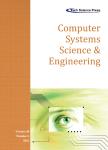Prediction of Alzheimer’s Using Random Forest with Radiomic Features
作者机构:KNIT SultanpurSultanpur228118India
出 版 物:《Computer Systems Science & Engineering》 (计算机系统科学与工程(英文))
年 卷 期:2023年第45卷第4期
页 面:513-530页
核心收录:
主 题:Alzheimer’s disease radiomic features cognitive normal support vector machine mild cognitive impairment extreme gradient boosting random forest
摘 要:Alzheimer’s disease is a non-reversible,non-curable,and progressive neurological disorder that induces the shrinkage and death of a specific neuronal population associated with memory formation and *** is a frequently occurring mental illness that occurs in about 60%–80%of cases of *** is usually observed between people in the age group of 60 years and *** upon the severity of symptoms the patients can be categorized in Cognitive Normal(CN),Mild Cognitive Impairment(MCI)and Alzheimer’s Disease(AD).Alzheimer’s disease is the last phase of the disease where the brain is severely damaged,and the patients are not able to live on their *** is an approach to extracting a huge number of features from medical images with the help of data characterization ***,105 number of radiomic features are extracted and used to predict the alzhimer’*** paper uses Support Vector Machine,K-Nearest Neighbour,Gaussian Naïve Bayes,eXtreme Gradient Boosting(XGBoost)and Random Forest to predict Alzheimer’s *** proposed random forest-based approach with the Radiomic features achieved an accuracy of 85%.This proposed approach also achieved 88%accuracy,88%recall,88%precision and 87%F1-score for AD ***,it achieved 72%accuracy,73%recall,72%precisionand 71%F1-score for AD *** and it achieved 69%accuracy,69%recall,68%precision and 69%F1-score for MCI *** comparative analysis shows that the proposed approach performs better than others approaches.



